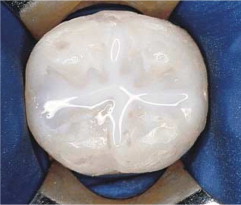Your Teeth's Secret Weapon Against Cavities
Brushing and flossing are essential for oral health, but sealants provide an additional defense against cavities. Our molar teeth have tiny grooves and pits on the chewing surface that are too small for toothbrush bristles to clean effectively. These small crevices can easily trap bacteria and lead to cavity formation.

How Sealants Work
Dentists apply sealants to cover these small grooves, preventing bacteria from infiltrating. When applied correctly, sealants can prevent:
- 80% of cavities for up to 2 years
- 50% of cavities for up to 4 years
When to Get Sealants
Sealants are typically recommended during childhood:
- When the six-year molars erupt
- When the 12-year molars erupt
Sealing these permanent molars soon after eruption helps ensure they remain cavity-free for a longer period.
The Application Process
Getting sealants is a painless and quick process, provided the teeth remain dry during the procedure. Here’s how dentists apply sealants:
- Etch teeth to clean and roughen the surface
- Rinse and thoroughly dry teeth
- Apply sealant material and spread evenly through pits and grooves
- Cure (harden) with a UV light for 30 seconds

That’s it! The process is quick and pain-free.
Insurance Coverage and Cost-Effectiveness
Many insurance companies cover sealants up to a certain age limit. We can help determine if you or your child has sealant coverage. Sealants typically last for several years before needing reapplication.
Even without insurance coverage, sealants are often more cost-effective than paying for fillings if decay begins. As the saying goes, “An ounce of prevention is worth a pound of cure!”
Regular Dental Check-ups
During your regular dental visits, your dentist will evaluate whether sealants are recommended for you. If you have any questions about the sealant process or potential insurance coverage, don’t hesitate to ask.
References
Mouth Healthy by ADA: https://www.mouthhealthy.org/en/az-topics/s/sealants
CDC: https://www.cdc.gov/oralhealth/dental_sealant_program/sealants-FAQ.htm
